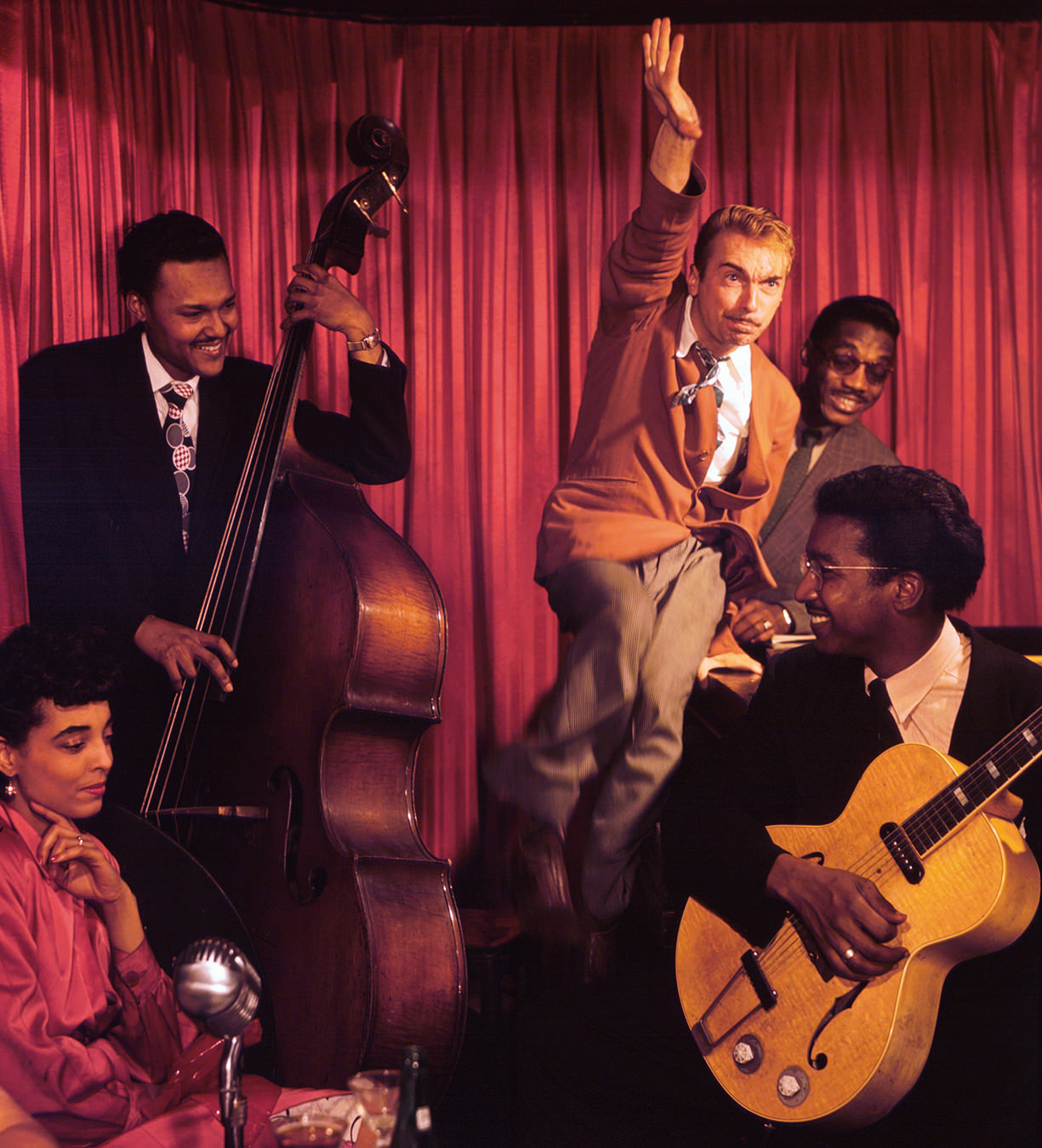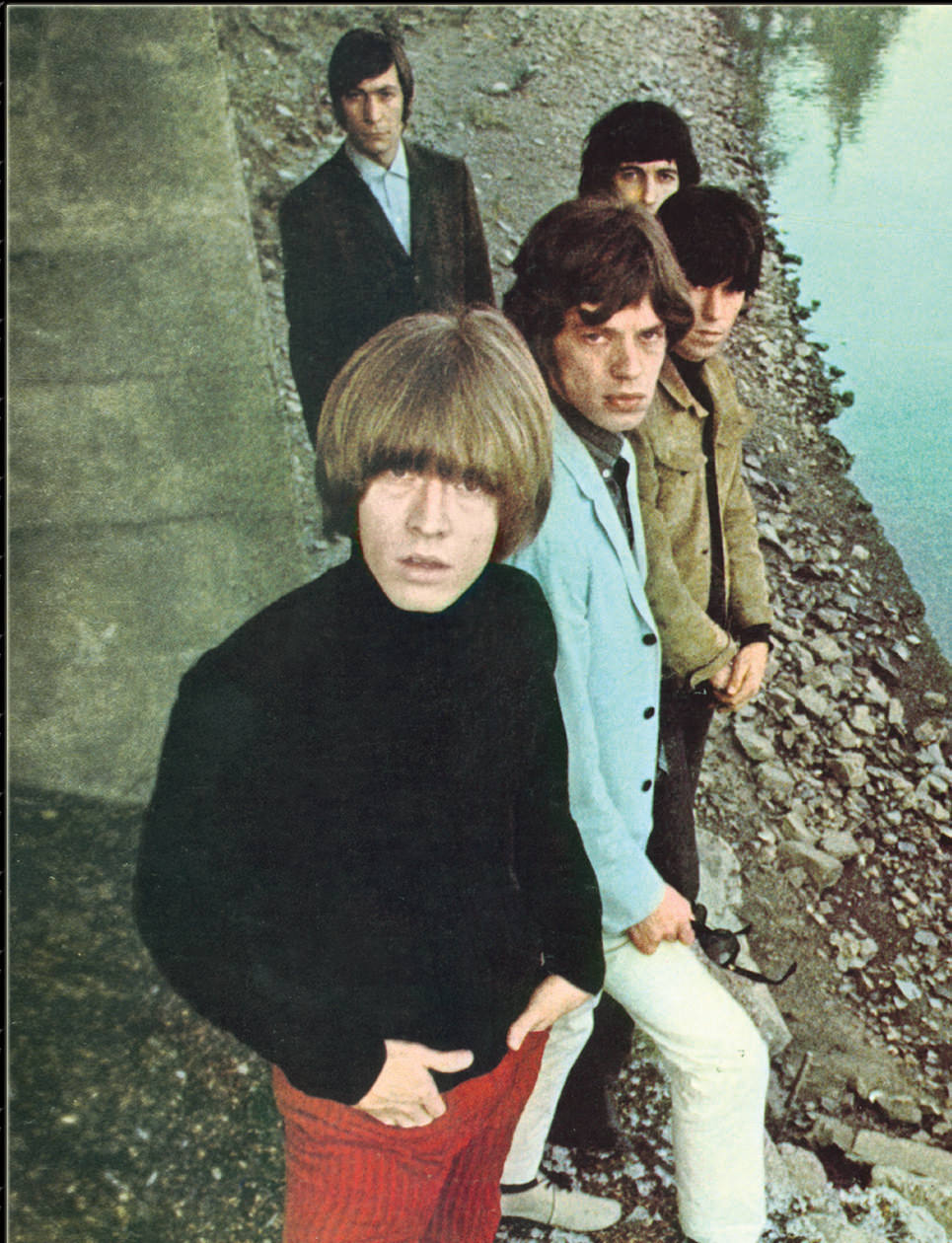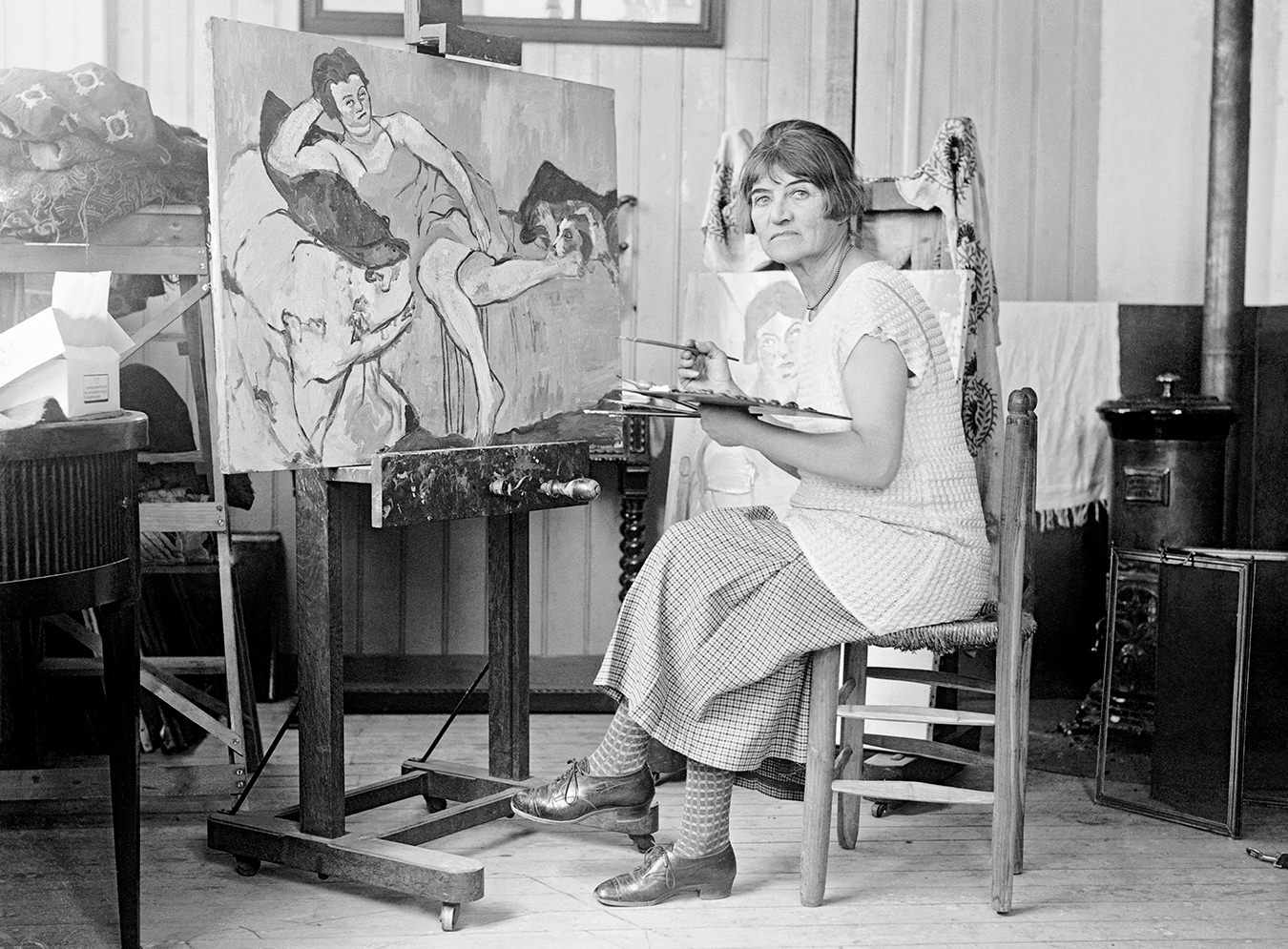Scalawags: “The Hipster” Harry
Hep to the jive.

Photo by William P. Gottlieb.
It was my good fortune to have known some of the last of the old breed of swinging jazz musicians. This was before jazz put on shorts and a ball cap and made nice. Many of these individuals are now legendary, as opposed to merely famous, and one of them, whom, alas, I did not meet, seems more legendary than the rest.
Information about him is ambiguous; his activities were so strange that even conservative, just-the-facts jazz reference books feel compelled to mention them. According to Jazz: The Rough Guide, for instance, he conducted the female choir in a prison where he was serving time, wrote a hymn accepted by the Vatican for the Marian year, lived on an Indian reserve and married the chief’s daughter, and more.
There was a Count, a Duke, and a King; a Bags, a Bird, and a Hawk; but no one knew what to call this cat, so he invented his own term: hipster.
The kind of hipster he was is not to be confused with the hipster of today. He wasn’t following a script; he wrote the script and then improvised on it. Before there was “hip”, there was “hep”, as in, “He’s hep to the jive they’re laying down.” Jive talk was lingo particular to the world of jazz, but so many outsiders were coming on hep that it annoyed musicians. Musicians, therefore, replaced “hep” with “hip”. And the first person known to have been called a hipster was Harry Gibson. But he wasn’t born a Gibson.
He was born a Raab in 1915 to a musical family in the Bronx. Harry was picking out tunes on the piano when he was three years old and could play the contemporary pop songs by the time he was eight. One day, while exploring the basement of the family music store, Harry chanced upon old music rolls from player pianos. He began to follow along with the music, playing everything he heard, not realizing that many of the notes in each tune had been added later. At 13, he got with a band playing Saturday night dances at Starlight Park, an amusement park on the Bronx River, which were broadcast on local radio. This led to a gig backing the singing waiters at a joint owned by gangster Dutch Schultz. Harry moved on to an otherwise all-black band called the Chocolate Bars. When he wasn’t playing, Harry hung around outside nightclubs in Harlem, listening and learning. He became known as the crazy white kid who played like a grown-up black man. He began to pick up on black jive and add to it.
He played at the Rhythm Club, a sort of nightspot and union hall for black musicians, and did takeoffs on Fats Waller, telling people that he was the star pupil of the man himself. One night, a large, jovial man started calling out requests, and Harry played them, all Fats Waller tunes. The man stuffed a five-dollar bill in the kitty after every one. Patrons thought this was real funny, but Harry didn’t know why they were laughing. Finally, the man said to Harry, “I just came around to hear what my star pupil sounds like.”
Fats Waller hired him to be his intermission piano player at a club on 52nd Street, known as Swing Street for its proliferation of jazz spots. The job lasted until Fats left town a year later, after which Harry’s style changed and he began to write songs. He played around the Street for another five years backing Billie Holiday, Charlie Parker, Coleman Hawkins, and Dizzy Gillespie. He also had a steady job with the more conservative Eddie Condon’s band and studied at the classically oriented Juilliard School of Music.
During those days in the early forties, Harry, now Gibson (having taken his new surname from the label on a gin bottle), got together with another scalawag, Slim Gaillard, and, according to some sources, invented a new song form called vocalese. This is not, as often is the case, to be confused with scat singing. Scat singing substitutes non-verbal sounds for words, whereas vocalese uses syllables that make up ersatz words; for instance, Harry “the Hipster” Gibson’s immortal phrase, 10 years before Little Richard, “Wop bop a boodlee a webop, a wop mop bam.” Gaillard recorded his famous war resister song, “The Flat Foot Floogie”, and Harry did the companion piece, “4F Ferdinand, the Frantic Freak”.
Shortly thereafter, Harry had his first big hit, Boogie Woogie in Blue, and recorded it on a Soundie. These were 1940s music videos, films played on projectors and later on screens mounted atop jukeboxes. You can watch these hipster videos on YouTube, and if you do, you will see an uncanny forerunner of Jerry Lee Lewis: a cat with long blond hair combed back, pumping the piano, standing up, fingers gone wild. The comparison to Jerry Lee is, however, primarily visual. Harry the Hipster was in another league as a piano player.
Harry was given to giving his piano a beating, so he devised what he called a “breakaway” piano. He’d pound the thing, kick it, smash, and at the end of a gig, it would fall completely apart, to be reassembled later.
The kind of hipster he was is not to be confused with the hipster of today. Harry Gibson wasn’t following a script; he wrote the script and then improvised on it.
In 1945, he was recruited to play at Billy Berg’s Rendezvous club in Hollywood for $1,000 a week. He stayed for more than a year. Berg asked him what this bebop was that he had been hearing about. Harry explained it and advised him to start booking acts like Dizzy Gillespie and Charlie Parker, which he did, and thus bebop came to the West Coast.
Harry had a couple of medium hits with a “Handsome Harry the Hipster” and “I Stay Brown All Year ’Round”, which, besides being a jive tune, also commented on race relations. It got him in trouble in certain quarters. The controversy it caused—a white man singing about the situation of black men—was nothing to his next song, which was his most popular but also, alas, led to his downfall: “Who Put the Benzedrine in Mrs. Murphy’s Ovaltine?”
The number sold a ton of copies and got Harry the Hipster plenty of jobs in clubs, at dances, and on radio, along with a part in a movie, Junior Prom, playing a guy who interrupts a music class and teaches the students about “the beat” so that pretty soon they’re dancing between their desks. But the song also brought the heat down on him, primarily from the vice squad, and he was sued by Ovaltine. Club owners were reluctant to hire him for fear the cops would bust the joint.
He was rescued by Mae West, who wanted him to play a hip sailor in her stage show Come On Up (Ring Twice). The show toured for a year, and Mae and Harry had an affair.
After that, Harry still found work, but, not as much of it. He played with Benny Carter and Earl “Fatha” Hines band. One night at the Savoy Ballroom when Cab Calloway was playing, Harry walked onstage carrying a large water pipe filled with marijuana. He lit the pipe and handed it to Cab Calloway, who took a couple of deep tokes and jumped up to go into his strutting, jiving act. Naturally, the patrons loved it.
But the jobs were diminishing rapidly as rock and roll began to tighten its grip on the entertainment business. Ironically, Harry, who could be said to have been playing rock and roll for years, couldn’t cash in on it. Another person more or less put out of work by all this was the hip comedian Lord Buckley. The two hipsters had to open their own nightclub, in Miami, to get gigs, and their own record label to turn out recordings. It didn’t last.
Harry the Hipster perfected the disappearing acts he’d been doing for decades, materializing infrequently, playing piano in Akron, Ohio, or driving a taxi in San Francisco. He was, in the language of the street, scuffling. The 1960s were a disaster for Harry, and he left few traces. The seventies, however, with hippies everywhere, saw the re-emergence of Harry “the Hipster” Gibson, whom bandleader Stan Kenton had dubbed a “hippie” 30 years earlier. He played in a band called Rock Boogie Blues Jammers fronted by Mike Cochrane. Harry wrote charts for the band, but its members had no idea what they meant. When Harry appeared onstage, he often tossed joints into the audience. Fearing busts, Cochrane convinced him to fill the papers with cigarette tobacco. Harry drank so much that Cochrane had to tell bartenders to water his drinks. Most of the time, Harry spoke black jive talk, which not even the 1970s hippies understood. Other times, he sounded like some Jewish gangster in a 1930s movie.
In 1989, age 74, Harry put out his most successful album ever. Although it was called Who Put the Benzedrine in Mrs. Murphy’s Ovaltine?, it consisted of new songs, including one about his little grass shack in Hawaii made of Maui Wowie, which could be smoked as well as lived in. There was also one about Shirley MacLaine and how cool she was.
Harry had always told people that if he got old and infirm, he’d kill himself rather than be a burden to others. The image of Harry “the Hipster” Gibson sitting in a wheelchair in an old folks’ home, dribbling oatmeal down his chin, is impossible to maintain. In 1991, wasting away with a bad heart, he put a gun to his head and ended it all.
One of those musicians whom I was fortunate enough to hang around with for a time was another piano player, Joe Albany. I asked him about Harry “the Hipster” Gibson. “He was crazy, man,” he said. “Last I heard of him, he had run away with some countess from Eastern Europe. Cat could play though.”
Photo by William P. Gottlieb.




